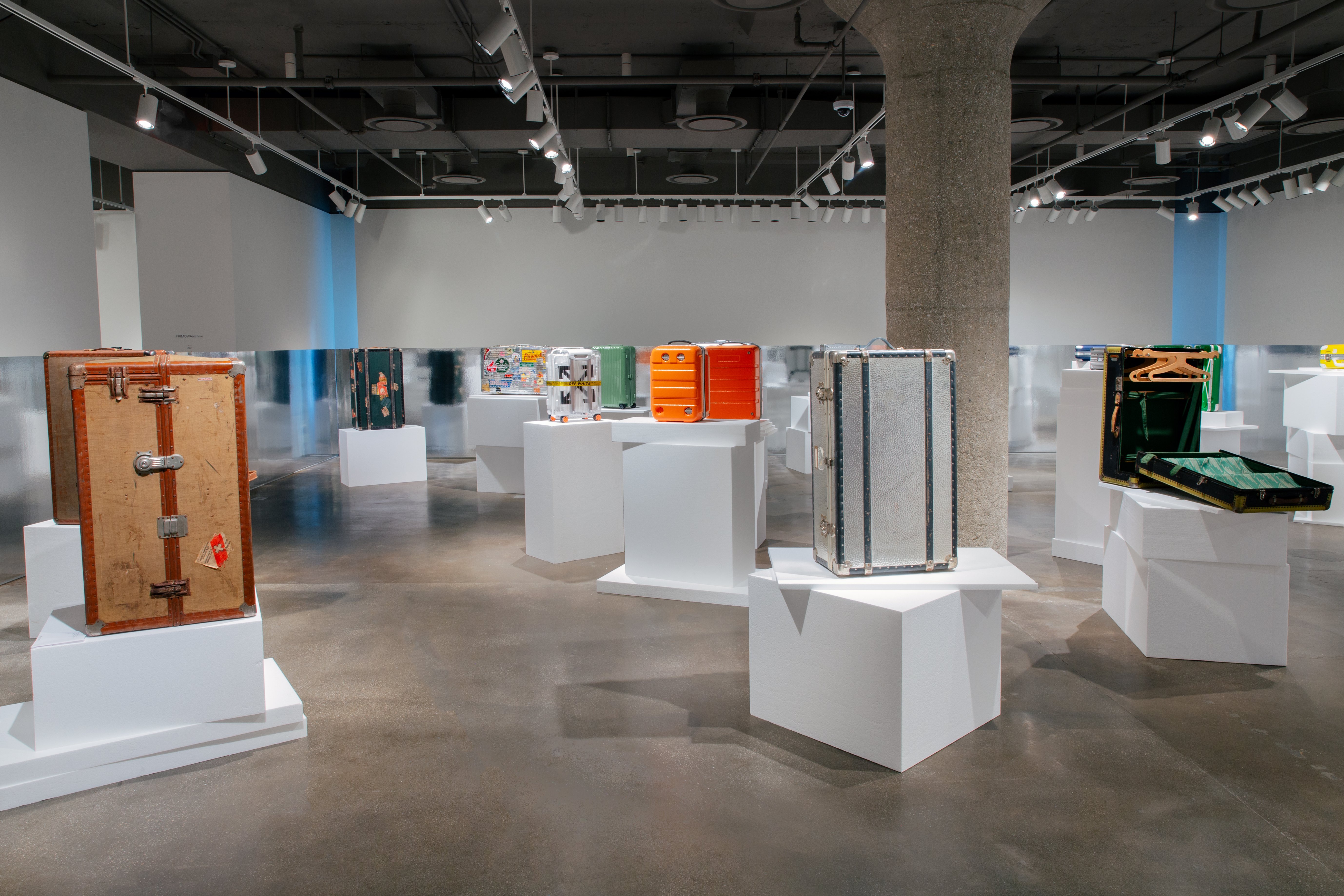
In the final years of the 19th century, progressive minds across Europe eagerly beckoned a new aesthetic age. Vienna Secession patriarch Gustav Klimt, together with a band of like-minded radicals, moved to rid the Austrian capital of its suffocating artistic conventions. The post-Impressionists rejected the imposing limitations of their forebears in favor of more liberated compositions. Art Nouveau pioneers endeavored to merge heavily decorative art with practical design.
And it was amid this propulsion toward Modernism that German designer Paul Morszeck produced a maiden fleet of luxury wooden trunks, out of which the high-concept luggage company RIMOWA would develop.
RIMOWA suitcases have always been attractive, resilient, and lightweight—an unbeatable trifecta coveted by high society’s globetrotters.
Morszeck’s proprietary series was attractive, resilient, and lightweight—an unbeatable trifecta coveted by high society’s globetrotters. The material culture of travel has of course transformed since 1898, when Morszeck introduced his inaugural line in Cologne, but RIMOWA continues to pursue that holy trinity. The brand has masterfully melded form and function since its inception. And while RIMOWA luggage has markedly evolved from its lumber origins, the label remains one of the most trusted and timeless names on the market.
The exhibition begins with early RIMOWA relics, from a seven-foot vintage cello transport case.
Today, Sotheby’s unveils an unprecedented exhibition that surveys RIMOWA’s design chronology and its monumental impact on travel by way of revolutionizing the suitcase. “RIMOWA Archive Collection: 1898–2019” is the first-ever RIMOWA retrospective, and features a selection of the key models that comprise the brand’s over 120-year history, from heritage styles plucked from private collections to contemporary collaborations with major artists and designers like Dior and Supreme. With each piece situated atop a plinth and showcased as a work of art in its own right, Sotheby’s offers comprehensive insight into RIMOWA’s long-haul narrative.
The exhibition begins with early RIMOWA relics, from a seven-foot vintage cello transport case, to a wood-and-leather wardrobe trunk with sumptuous green lining from 1927. But RIMOWA, as it’s known today, didn’t come into focus until the late 1930s. It was in 1937 that Paul Morszeck’s son, Richard, lent his name to a lasting rebrand which yielded “RIMOWA,” a composite of the first two letters of Richard, Morszeck, and Warenzeichen (the latter word means trademark in German). That same year, Richard forged a metal trunk that would define RIMOWA’s metallic archetype—a fortunate invention following a less fortunate and rumored factory fire that incinerated everything but his stash of aluminum.
With the development of commercial aircraft, the luggage landscape was completely transformed.
Richard oversaw RIMOWA’s output during one of the most pivotal eras in design history. In the wake of World War I, the artists behind the Dutch De Stijl movement sought to restore a semblance of visual harmony by distilling color and form down to their most elementary states. The German Bauhaus school encouraged a utopian confluence of creativity and functionality. Art Deco, meanwhile, was born from anxiety brought on by the cold indifference of mass production.
It was the commercial aircraft, however, that would not only elevate the glamor of travel, but completely transform the luggage landscape. The world’s first all-metal plane, the Junkers F13, duly inspired RIMOWA’s iconic grooved aluminum suitcase in 1950. Made from duraluminium, the same copper and aluminum alloy that composed the Junkers F13, this sleek prototype laid the groundwork for RIMOWA’s most enduring case, which had to be lighter, tougher, and more spatially efficient than its progenitors. Its minimalist design also served as a malleable template for technical improvements like waterproofing in 1976.
The world’s first all-metal plane, the Junkers F13, duly inspired RIMOWA’s iconic grooved aluminum suitcase in 1950.
In a design feat that rivaled RIMOWA’s grooved aluminum suitcase, Richard Morszeck’s son, Dieter Morszeck, embraced the 21st century with the virgin polycarbonate suitcase. Pure polycarbonate is the strongest of its kind on a molecular level, resistant to extreme temperatures and extensive wear and tear. Subsequent advancements included a patented eight-wheel system for fluid, 360-degree movement, an electronic tag, and a TSA security lock. Regardless of make or model, each suitcase is 80 percent hand-made and inspected at every stage of assembly at RIMOWA-owned factories, where the brand can maintain control over its meticulous process and test new ideas to perfection.
A wood-and-leather RIMOWA wardrobe trunk with sumptuous green lining from 1927.
In addition to the classics, special limited-edition suitcases also inhabit “RIMOWA Archive Collection.” To coincide with the Frieze LA art fair in February 2019, artist Alex Israel evoked the Los Angeles sunset with gradients of coral and blue on the RIMOWA Original model. Also in 2019, artist Daniel Arsham came up with the Eroded Attaché, a crumbling, artifact-like version of the RIMOWA Attaché suitcase made from sand and volcanic ash, placed inside the original Attaché, a comparative symbol of durability.
The show includes examples of RIMOWA collaborations with major artists and designers like Dior and Supreme.
The tail-end of RIMOWA’s current timeline is marked by a small pearlescent polycarbonate suitcase, the Essential Cabin Lite in Pearl Rose, a North American exclusive that debuts with the exhibition’s opening. The model revisits a bestselling color, “Pearl Rose,” and weighs 30 percent less than the RIMOWA Essential suitcase that came before it. This small but mighty summation of RIMOWA’s celebrated history is the ultimate accessory for tireless travelers who embody the brand’s ethos: “No One Builds a Legacy by Standing Still.”
“RIMOWA Archive Collection: 1898–2019” is on view at Sotheby’s New York from September 20–25, 2019. The exhibition is part of Sotheby’s bi-annual sale, Contemporary Curated. This season’s Contemporary Curated includes works by Kerry James Marshall, Cecily Brown, Jean-Michel Basquiat, and Joan Mitchell, and is organized by the avid art collector and renowned Italian chef, Massimo Bottura.